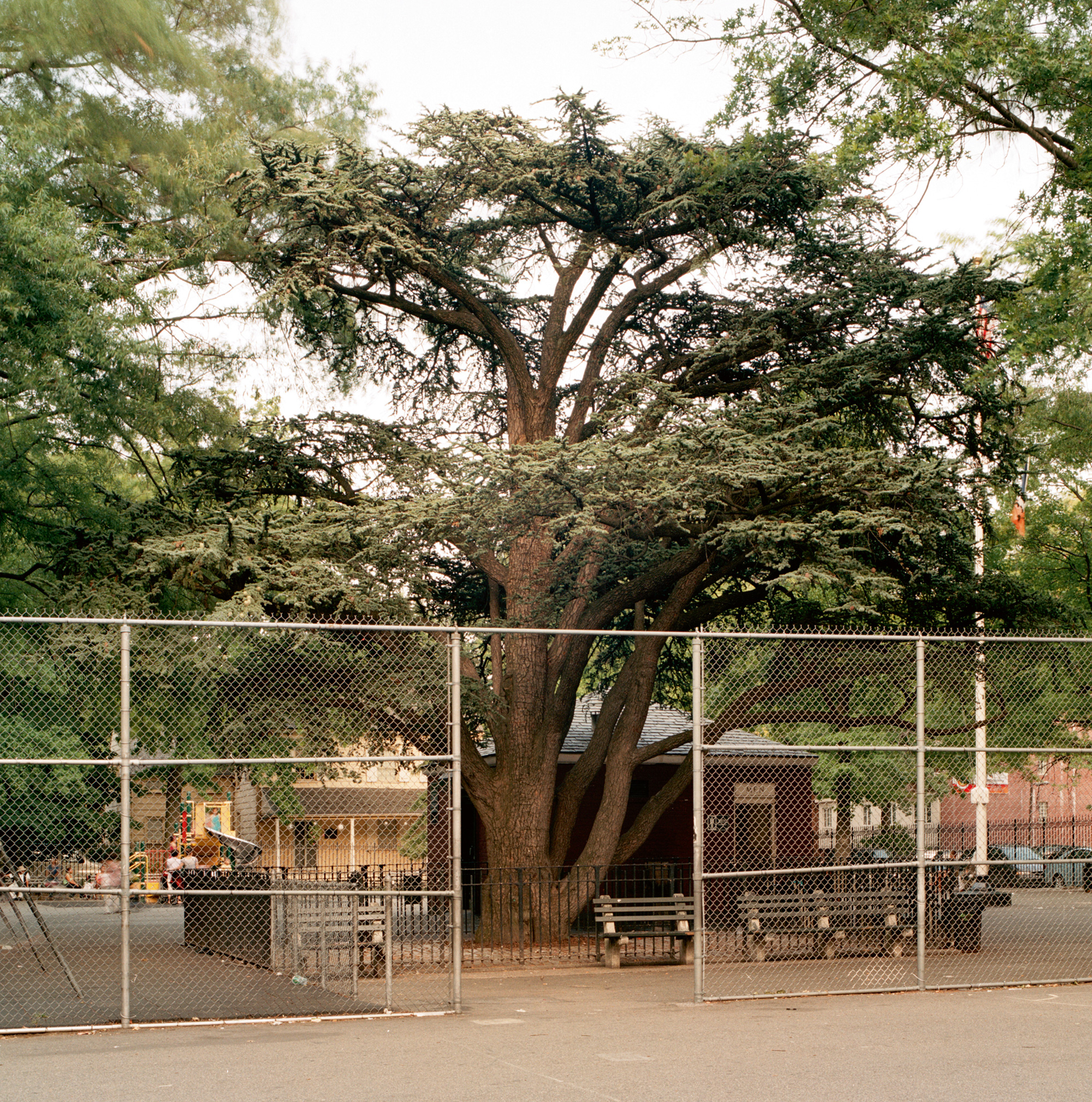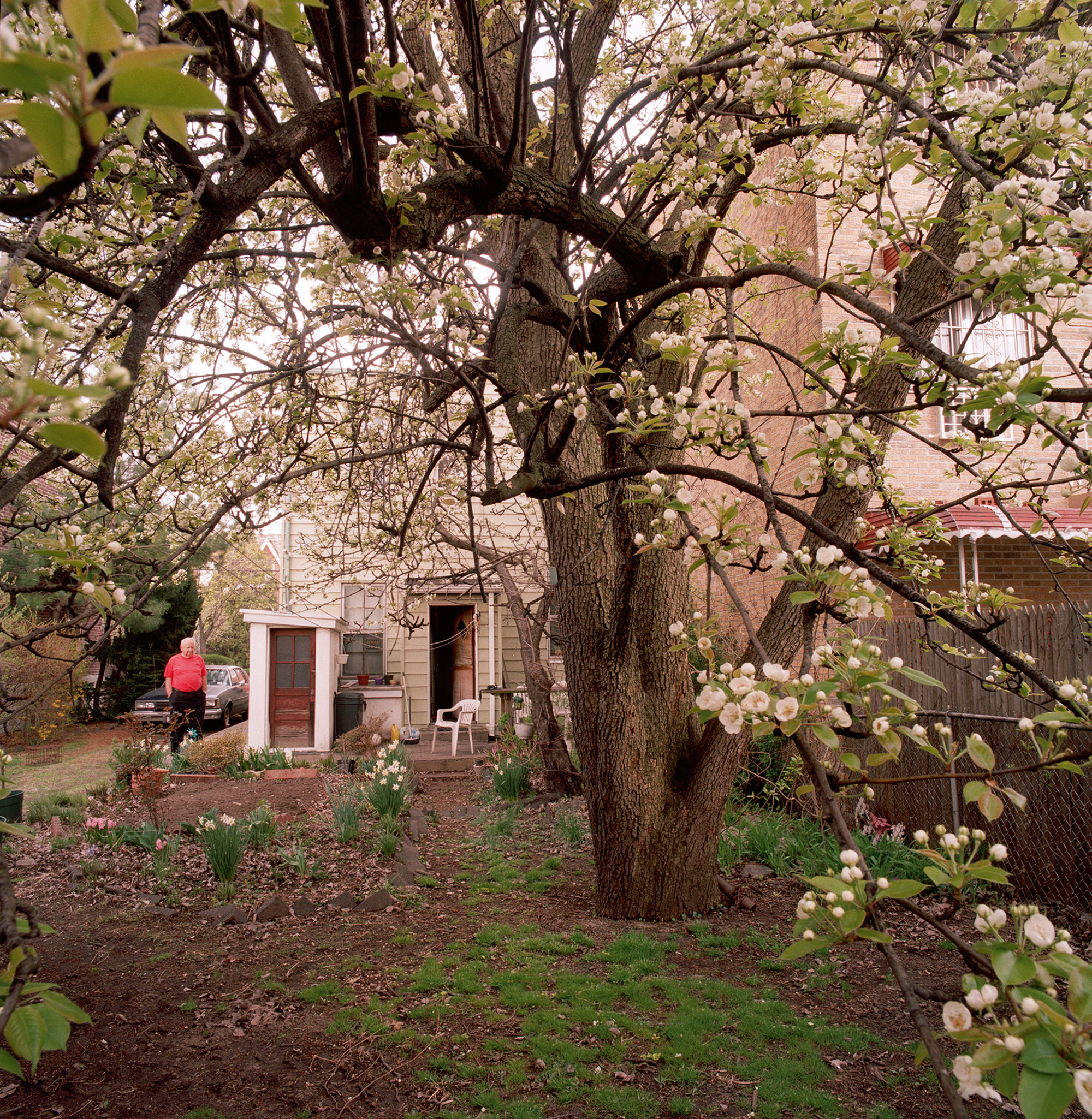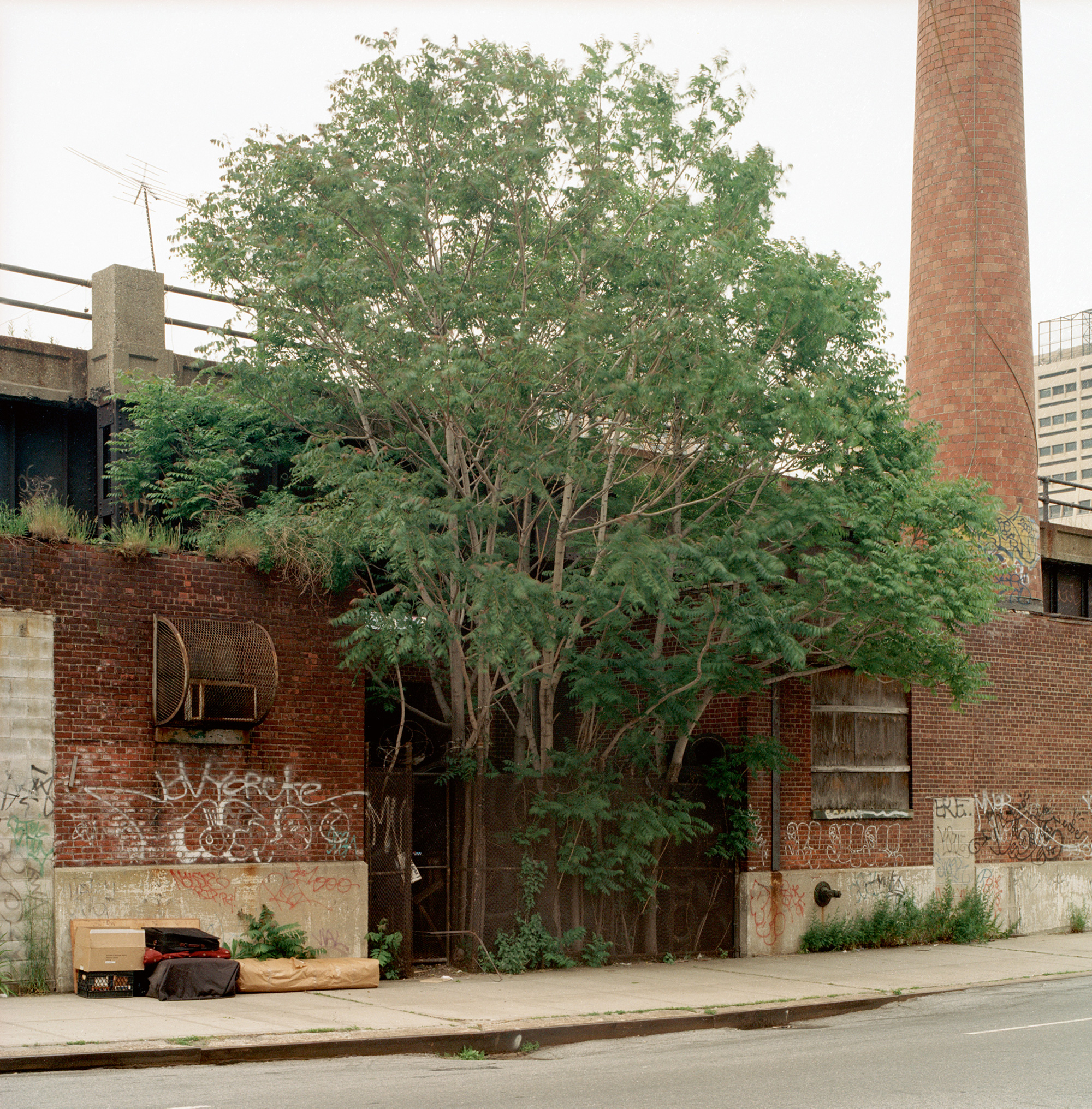Trees of New York
Deeply rooted
Benjamin Swett
There is a stand of trees in the Zagros Mountains of Western Iran that local villagers have revered and protected for generations in the belief that cutting them would be bad luck. They call the trees rahmani, or “god’s gift.” Botanists have studied the trees in Derakhtchaman because they grow at a higher altitude (1,730 m) than that at which the species (Caucasian wingnut, or Pterocarya fraxinifolia) usually thrives. There have been calls for national protection for the trees and even designation as a national natural monument. I mention the trees, however, not because of their interest to science but because of what they suggest about trees and memory. It is common to talk about how trees improve living conditions in cities by filtering and cooling the air, absorbing excess rainwater, and making neighborhoods more attractive, but little has been said about the equally important role of trees as storehouses of a city’s past. Just as trees remove carbon from the atmosphere and hold it for many years in their woody tissue, so do they sequester the shared experiences of the people who live alongside them. In meaningful ways, trees carry on the collective memories of communities.
Part of everything we exhale—whether from our lungs, from our chimneys, or from the exhaust pipes of our cars—is absorbed by a tree and stored away in a layer of wood. Like the strata of soil that archaeologists dig down through to find evidence of earlier civilizations, the growth rings of trees contain, in organized fashion, physical manifestations of the world and of the human presence in it at different times in a tree’s history. By studying the ratios of carbon in tree rings, for example, scientists have been able to chart the increasing use of fossil fuels by humans over the centuries. Years of great fires, floods, logging—any dramatic changes, really, in the vicinity of a tree, whether caused by nature or by man—are recorded in measurable ways in the rings. Even the ordinary things—the average years, when nothing unusual happens—are kept as well in the wood that forms. Tulip trees still growing at George Washington’s house in Virginia, which we know Washington planted in 1785, contain, in their rings, a record of what Mount Vernon was like in that year. In a similar way, the millions of trees in the parks, along the streets, and in the backyards and cemeteries of New York City collect and hold the city’s past. Yet because trees become what they are in response to genetics and the places where they grow; because, in cities, large numbers of people come to know and recognize particular trees over time; and because these trees live longer—sometimes much longer—than any of the people who see them, they take on an emotional and psychological importance that is as significant as the more abstract kinds of information stored in the growth rings or the practical amenities provided by the wood and leaves.
For my new book New York City of Trees (Quantuck Lane Press), I have taken photographs of trees scattered around the five boroughs of New York City, and have tried to show how much of the life of the city is contained in its trees. As I went around visiting the extraordinary specimens growing in different neighborhoods, I often found myself under surveillance by residents. People would stand and watch me set up the tripod and focus the lens and then begin asking questions and making comments. This was disconcerting at first, but eventually I realized that the comments and questions were forcing me to understand the trees in a different way. These large plants along the streets or in the parks or cemeteries had meanings for their human neighbors that were strong and personal and seemed to connect to something larger.
At a ginkgo in Isham Park in northern Manhattan, for example, a man began telling me how his grandfather had said that the tree had been growing there when he—the grandfather—was a boy, and how the grandfather had showed him, in the wall beneath the tree, one of the original milestones from when that stretch of Broadway was the Boston Post Road and carried postal riders to Boston. At a white oak at the ninth hole of the Split Rock Golf Course, one golfer began describing an even bigger oak he had known in his childhood in Alabama, and another recounted a somewhat confusing but essentially correct story about American soldiers hiding behind stone walls to escape the British during the American Revolution. As I stood there, I realized that I was standing not so much at a tree as at a busy intersection of people’s lives.
An estimated 5.2 million trees grow in the city. The existence of so many nonlocal species that we now take for granted—white mulberry, ginkgo, osage orange, dawn redwood, royal paulownia—is a direct or indirect result of human intervention. In his authoritative account of changes on Manhattan Island since Henry Hudson explored the region, Eric Sanderson has written that, because of introductions, “the plant diversity of New York City today may be twice what it was in 1609.” This diversity of plants is a reflection of the diversity of the human population and the regular intervention of humans in the ecology of the region.
Part of the appeal and power of these trees is how little one can ultimately know about them. You can identify the species from the leaves and bark; estimate the mass from the diameter, height, and crown spread; learn the age and something of the history from the growth rings—yet the life of each individual specimen remains a mystery. Perhaps because we know so little about them, they appeal to the imagination as witnesses of events of the past. As Todd Forrest of the New York Botanical Garden put it, trees “bear the scars of their lives.” Not only through the woody layers inside them but through the more outwardly visible twists and bends in their trunks, the scars and fissures in their bark, and the stumps and holes of lost limbs do they show the influences of the places where they have grown and give back signs of what we ourselves have done to them. Every block in New York City has a scarred veteran, but perhaps the most powerful example is the so-called Survivor Tree at the 9/11 Memorial in lower Manhattan. A Callery pear pulled from the wreckage after the collapse of the World Trade Center towers on September 11, 2001, and kept alive by the Parks Department before being replanted near its original location ten years later, the tree stands apart as the only one of its species among the 412 swamp white oaks planted at the site of the fallen buildings. Though growing healthily again, the tree looks odd. You can’t help but notice it. Everyone does.
In his fascinating book Forests: The Shadow of Civilization, Robert Pogue Harrison points out how trees stand apart, mute and even frightening in their connections to forces outside our control. Not only in myths and fairy tales but also in national traditions of the American frontier, trees conjure up images and ideas of wild beasts, extremes of weather and terrain, the destruction of property, loneliness. The recent spate of lawsuits against New York City for injuries and even a death caused by falling branches is itself a reminder of the forces forests can unleash. We could respond to these threats by cutting down the trees. Or we could recognize the value of trees as bearers of cultural memory and take better care of them.
Presented below are three New York City trees featured in Swett’s new book.

Cedar of Lebanon, Cedrus libani, diameter 100.5"
Weeping Beech Park, Flushing, Queens
28 July 2010
Before the chain-link fence, before the iron fence, before the park benches, before the comfort station—before the playground itself, when fields stretched away on either side and Flushing was a village still known for its trees—a local nurseryman planted this cedar near the house of his great-grandparents. Native to a small strip of western Asia that includes modern-day Lebanon, Syria, and southwestern Turkey, and first brought to this continent during colonial times, cedars of Lebanon have been admired through the ages for their graceful broad-spreading branches and flat-topped crowns and had graced the estates of wealthy Europeans long before they arrived here. Old photographs depict several thriving in Flushing during the late nineteenth and early twentieth centuries—one in the front yard of the former home of William Prince, the last owner of the oldest nursery in Flushing—but the forces of urbanization seem to have taken their toll on those long ago, and as far as we know this specimen in Weeping Beech Park, planted by Robert Bowne Parsons in the 1890s, is the only large one remaining in Flushing. It is in fact young for its kind: trees estimated to be as old as two thousand years still grow in protected groves in Lebanon. But it is one of the northernmost true Lebanon cedars planted in North America before global warming began changing growing conditions. Whether Parsons planted it temporarily, as nursery stock during the declining years of his family’s nursery business, or permanently to grace the streetscape of Flushing is one of the mysteries that still surround it. On the afternoon I photographed it, a group of young men watched me from a cement table in the playground, where they were playing dominoes. “I used to climb that tree,” one of them said. “All the way to the top there. All the way to the top I’d be, looking down on everybody.” As I packed up my camera, the clacking of the dominoes and the low voices of the young men continued in the dusk, and continued in my mind long after I had left the park.

Common Pear, Pyrus communis, diameter 42"
Private Residence, Woodside, Queens
6 April 2010
When Marian and Wolfgang Radermacher bought their house in 1965, Mr. Radermacher was working as a tool and die maker for the Bulova Watch Company of Woodside. They chose the house because it was in a good school district, was near Mr. Radermacher’s place of work, and had a yard with a beautiful pear tree where their children could play. Now the children are grown up and have families of their own and Mr. Radermacher is retired. A large apartment building has been put up next door, but otherwise much is the same, especially for the pear tree, which continues to blossom and put forth fruit every year, as it always has. Nobody knows who planted it or how old it is but it remains as healthy and productive as ever, and the Radermachers say the fruit is delicious. Still attached to the trunk is the green plaque that the Parks Department commissioner Henry J. Stern hung on it in 1985, identifying it as one of the 120 Great Trees designated that year after a citywide “Great Tree Search.” Fewer than one hundred of the trees remain, and of these very few retain their plaques. The common pear is a quiet species, with little attention paid to it one way or another. Until recently, arborists in cities preferred the tougher Callery pear, whose upright growth pattern is more suited to streets. For years, however, a famous common pear grew at the corner of Third Avenue and 13th Street in Manhattan. Brought from England on a ship by Peter Stuyvesant, the former governor-general of New Amsterdam, in 1667, and planted on what was then his bowerie or farm, it continued to bear fruit as the city changed around it, until 1867, when a collision between two heavily laden carts on a stormy day knocked it over. As long as the Radermachers’ pear tree continues to live in this peaceful, safe yard, away from traffic, it is unlikely that such an accident will befall it, and it may continue putting forth fruit, leaves, and blossoms for two hundred years as well.

Tree of Heaven, Ailanthus altissima (not measured—removed 2002)
30th Street at Eleventh Avenue, Manhattan
28 May 2002
As everyone knows, the tree of heaven is a weed tree, a vicious invasive that would take root in a soda can if given the opportunity. Just the sight of it, in many people’s minds, breeds thoughts of insurrection against the urban grid. If you look closely at this specimen you will notice, aside from the domestic materials arranged alongside it, that somebody has attached a makeshift antenna to the railing of the abandoned railroad line above. Ailanthus was introduced to the United States from its native China as an ornamental tree in 1784 and quickly spread on its own. It is now the most common tree in New York, making up 9 percent of the urban forest. The specimen here grew in classic ailanthus territory, a seemingly forgotten spot beneath an abandoned railroad track. As is often the case with trees in New York City, when I returned eight months after taking the picture, the tree (or trees, as this actually seems to have been) was gone, along with the milk crates, the suitcase, and the cardboard box beneath it. The authorities, the cabinetmaker across the street suggested, had cut down the tree and hauled it away in an effort to “clean up the block.” All that remained was the graffiti. I might have left it at that, but as time went on, more facts emerged. It turned out that the cabinetmaker didn’t have the full story. In March 2002, two months before I took the picture, the city council had passed a resolution advocating the renovation of the “abandoned railroad track” as a walking trail. A public-private partnership was formed to clear the tracks and transform them into the elevated park now known as the High Line. The ailanthus had been cut down during the initial clearing stage. As time went on, sophisticated plantings began to recreate the look of the tracks during their years of abandonment. The gardeners, however, avoided reintroducing the non-native ailanthus. Wanting to maintain the spontaneous feel of the abandoned tracks, they planted the similarly leaved native sumac instead.
Benjamin Swett is a New York City-based writer and photographer. His previous books include The Hudson Valley: A Cultural Guide (Quantuck Lane Press, 2009), Route 22 (Quantuck Lane Press, 2007), and Great Trees of New York City: A Guide (New York Tree Trust, 2000).